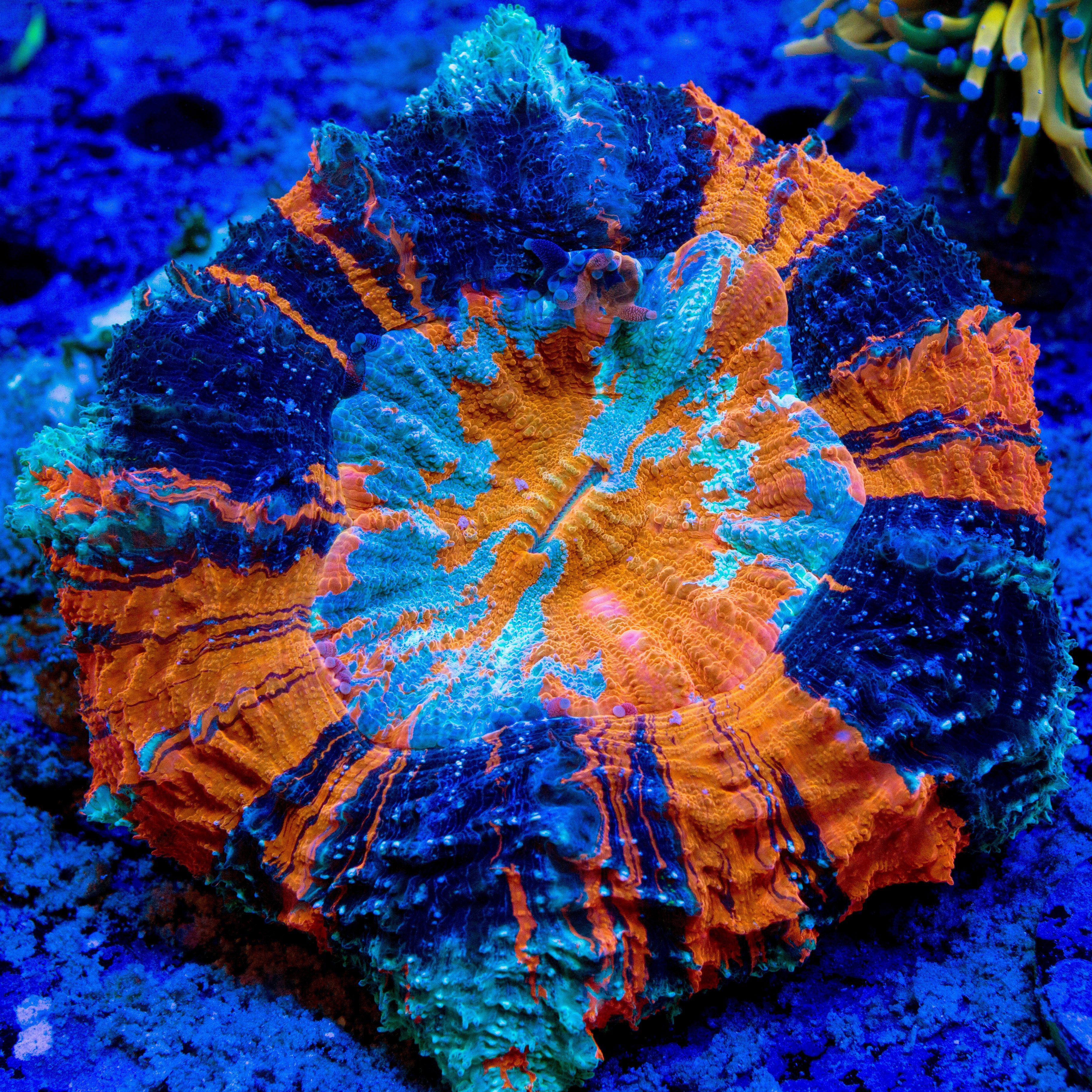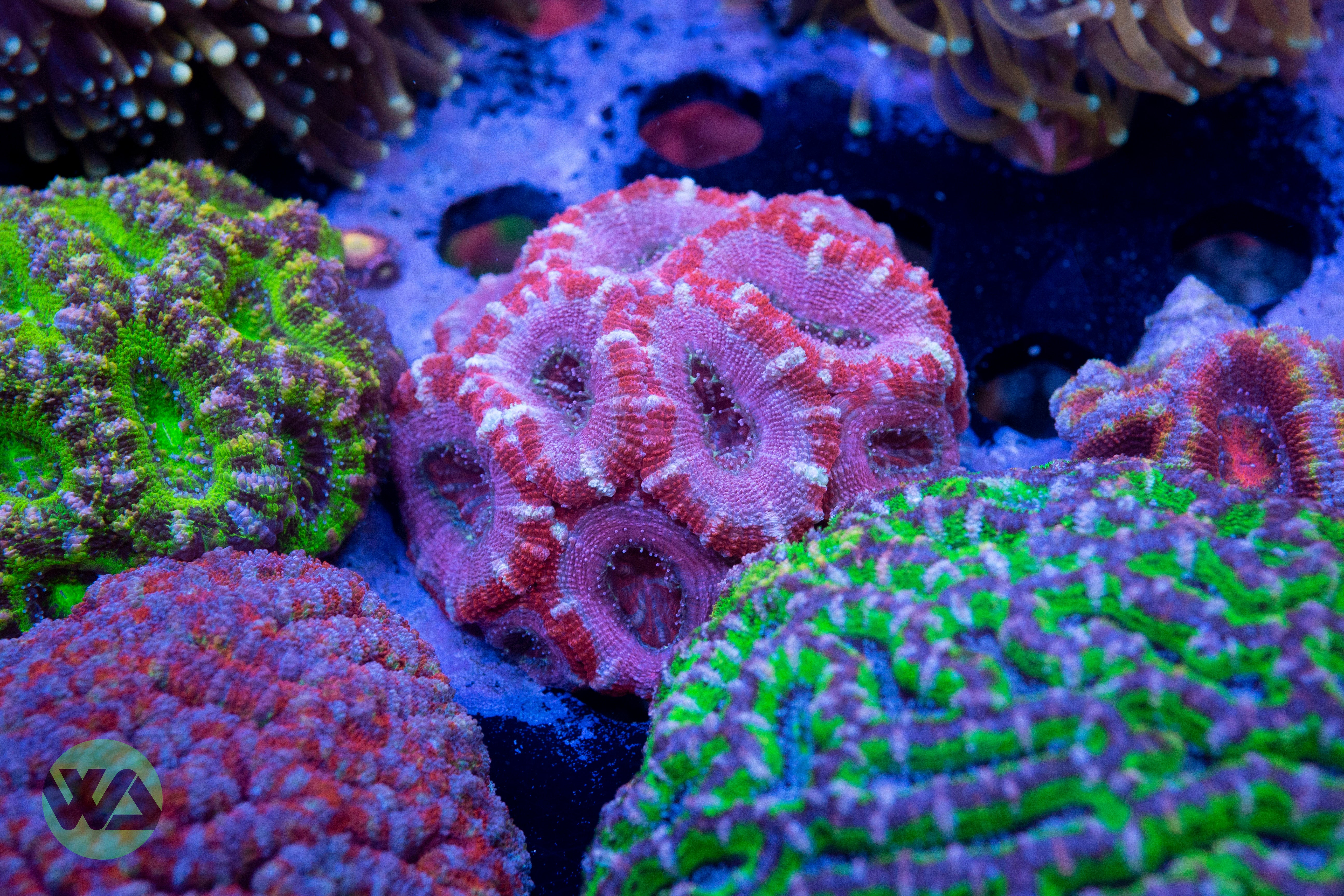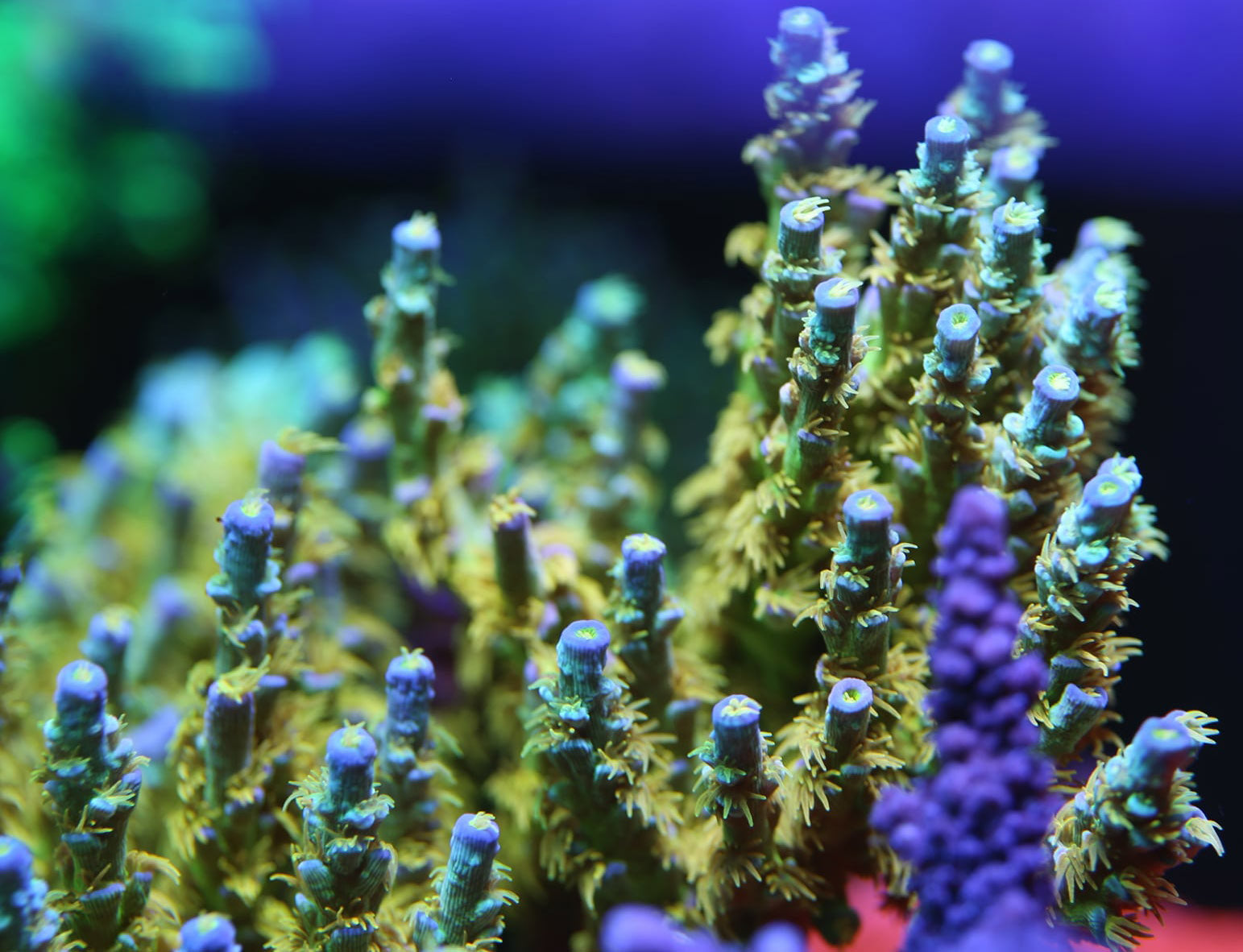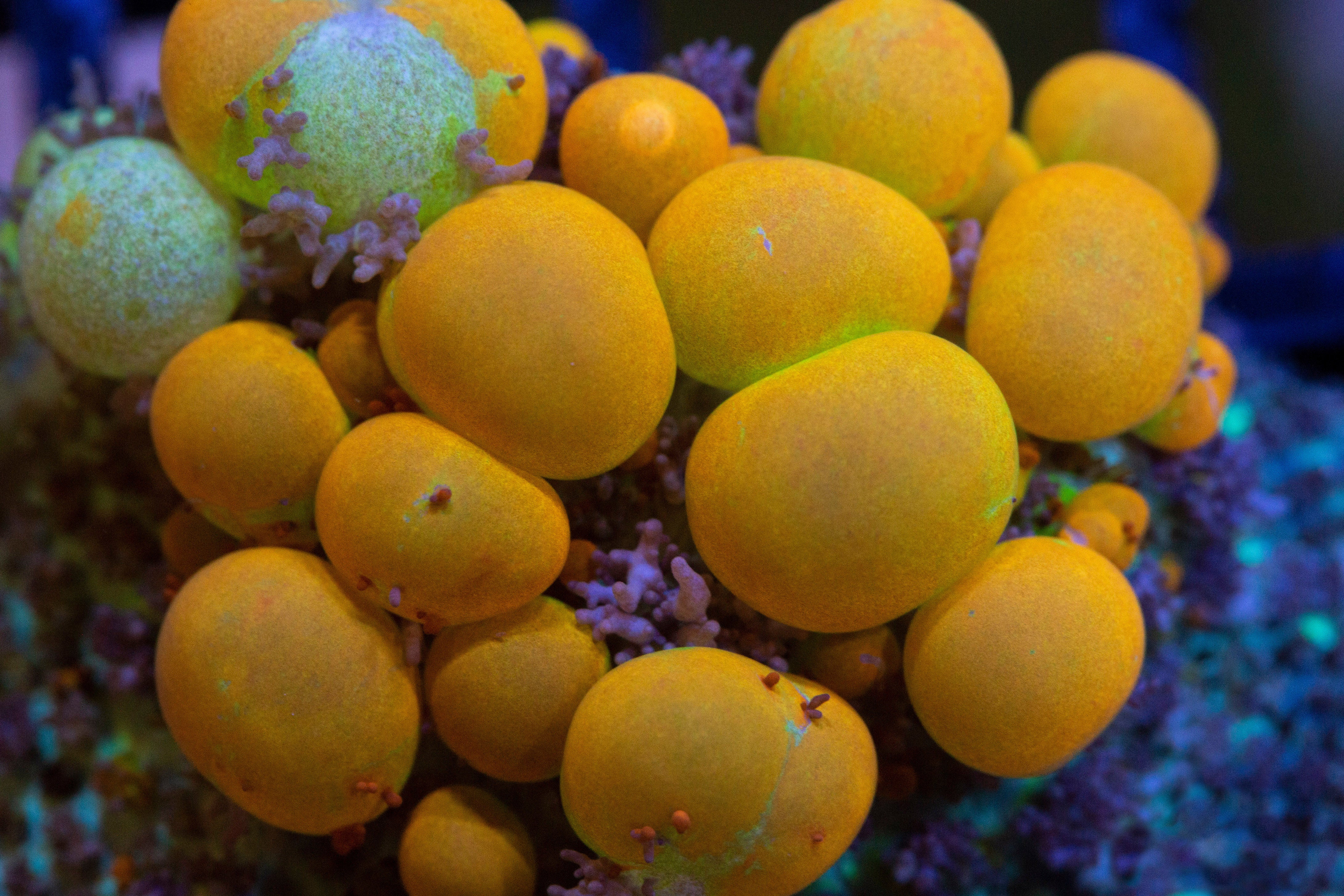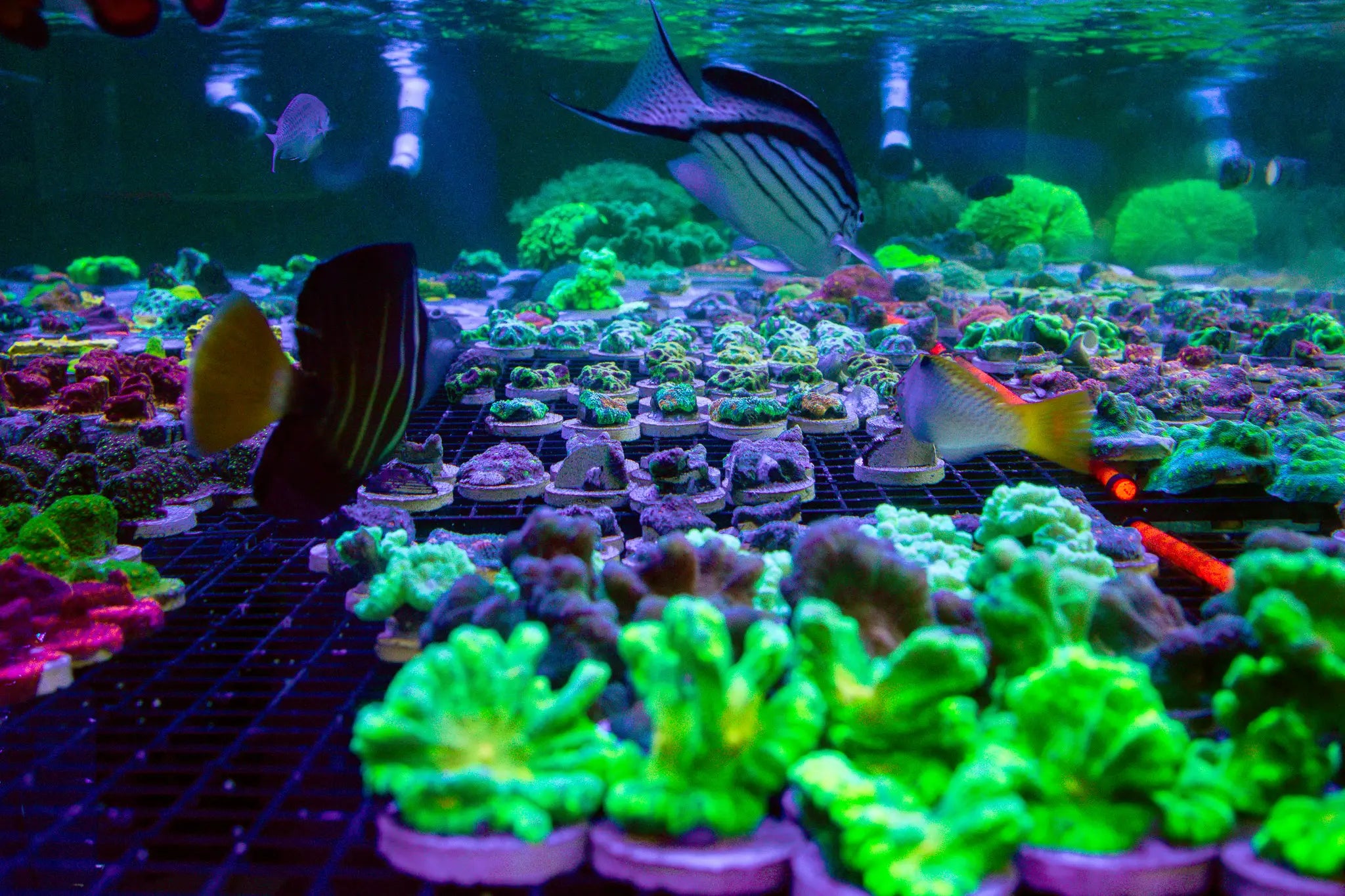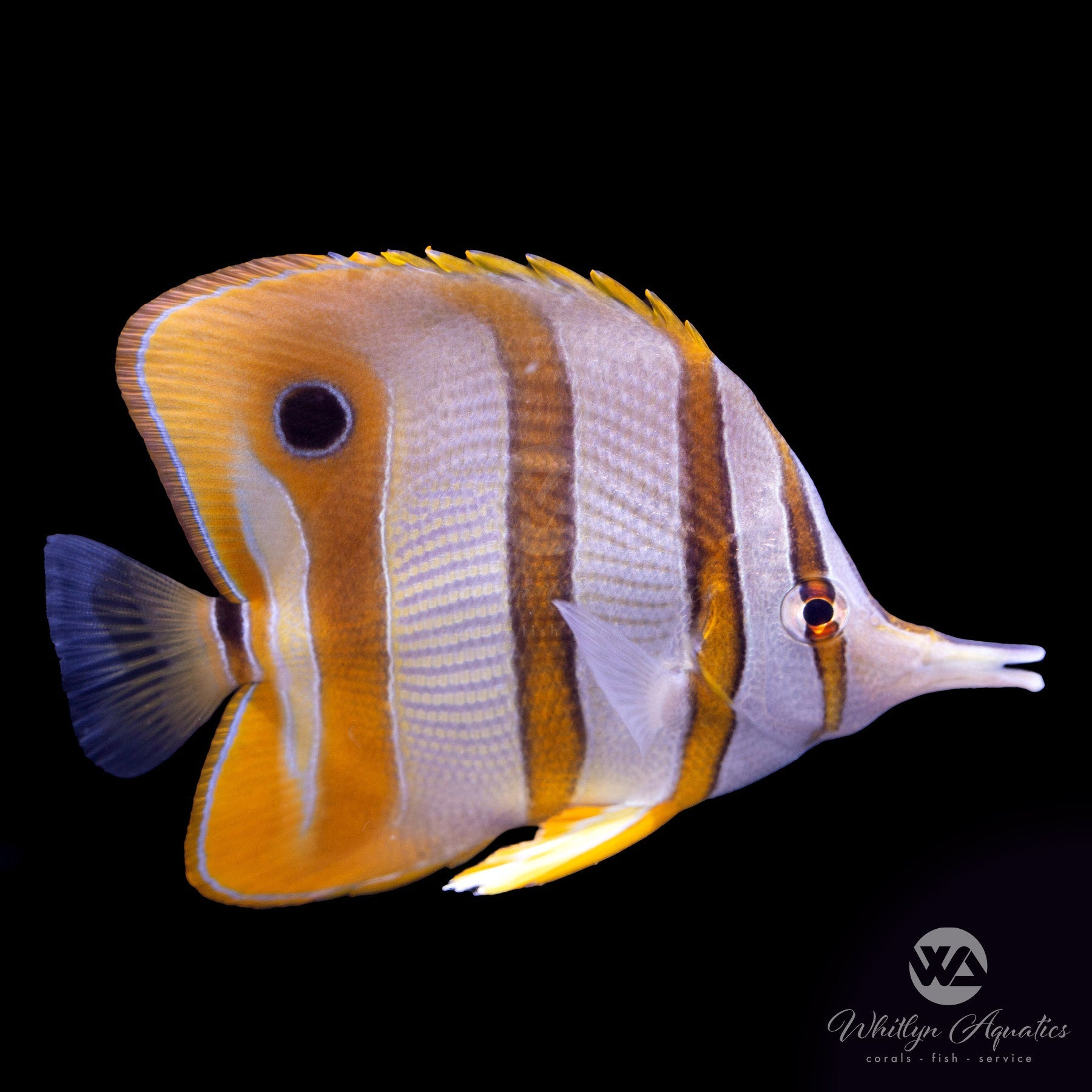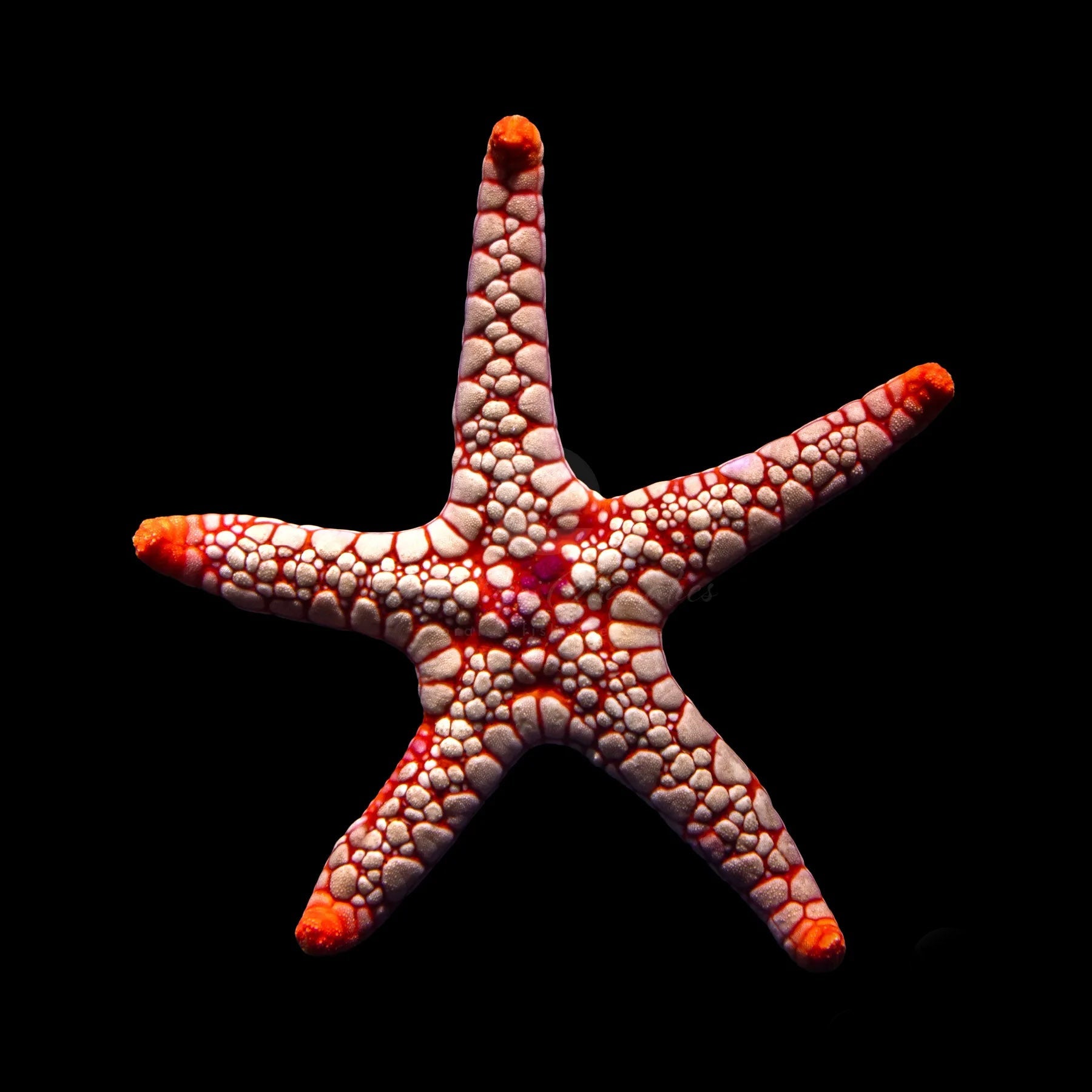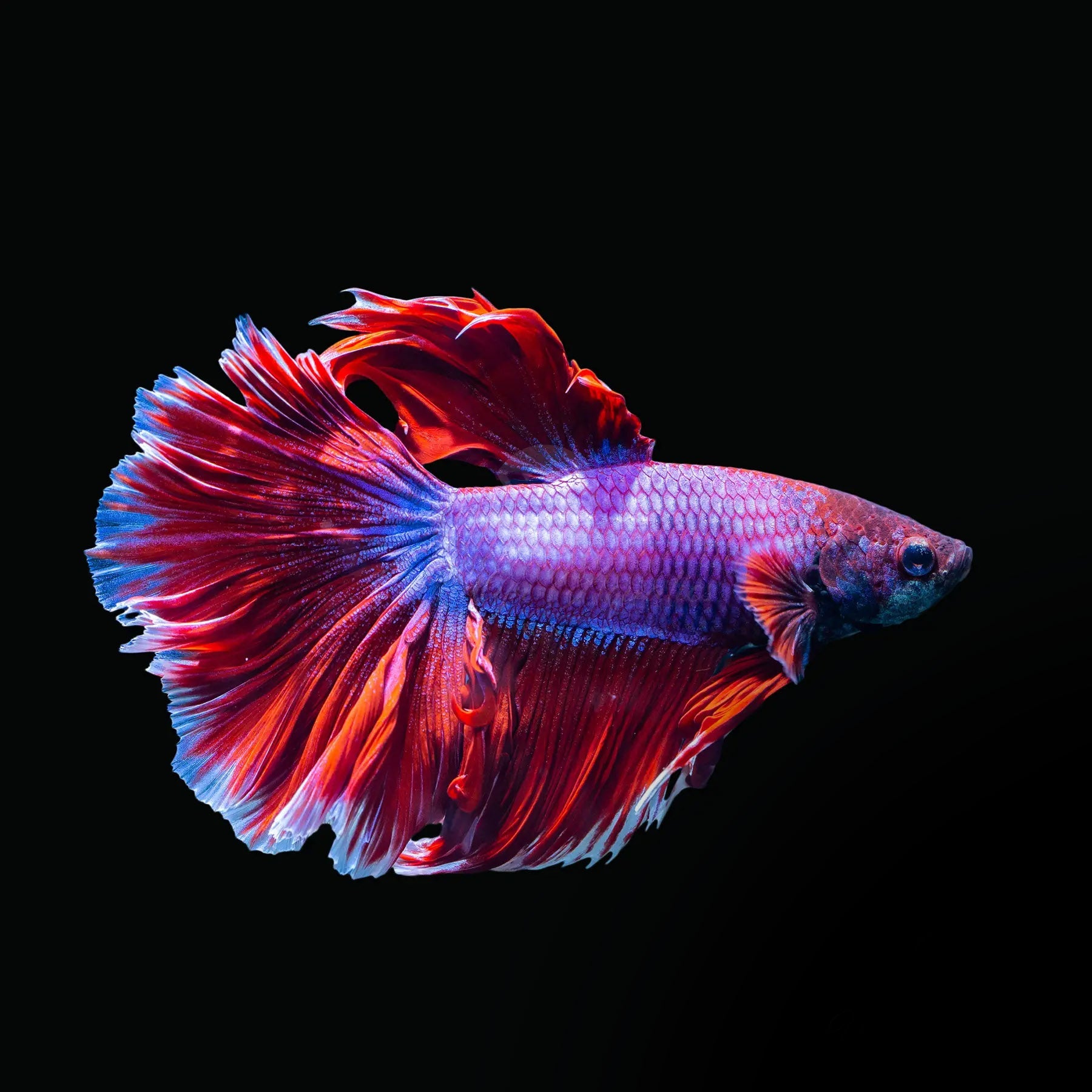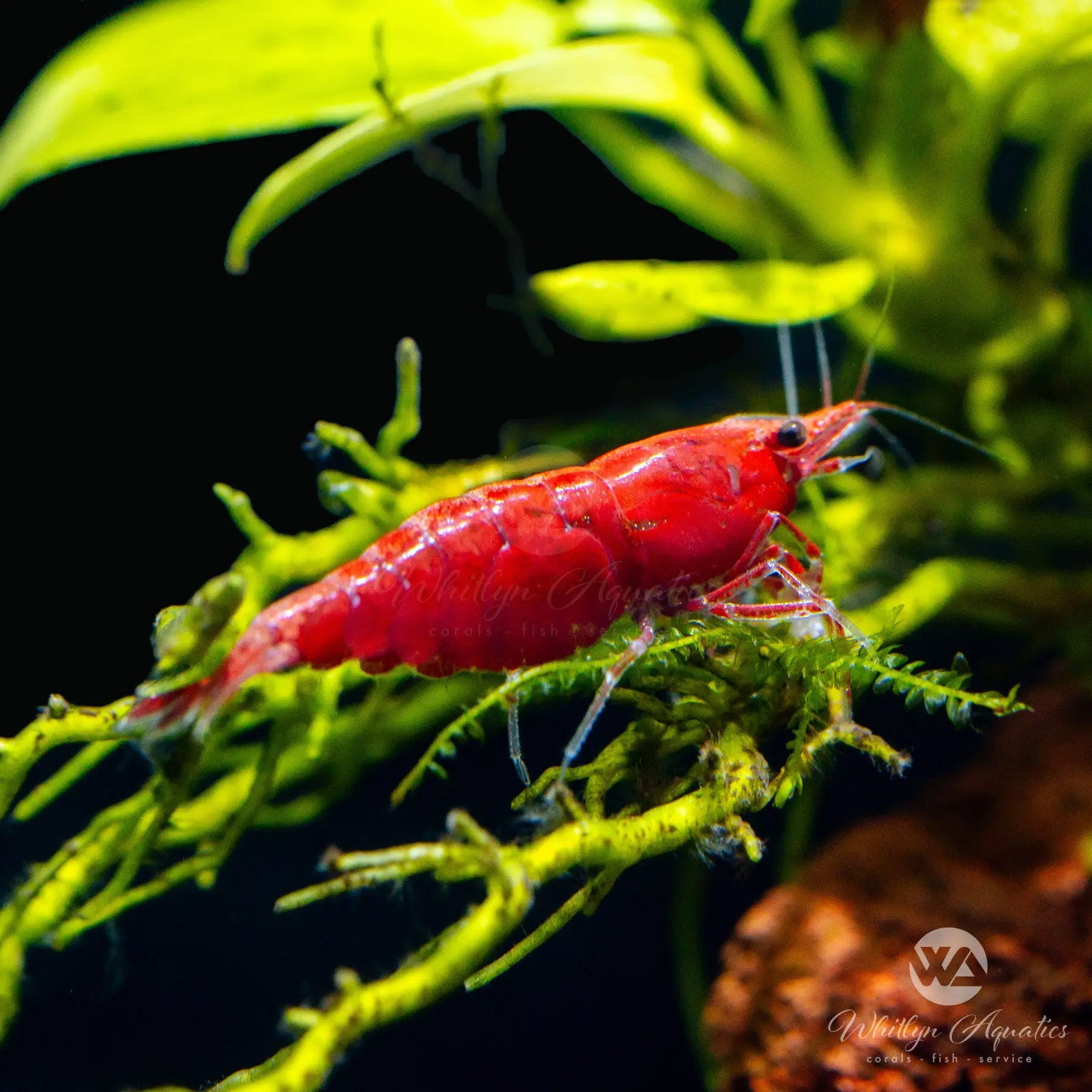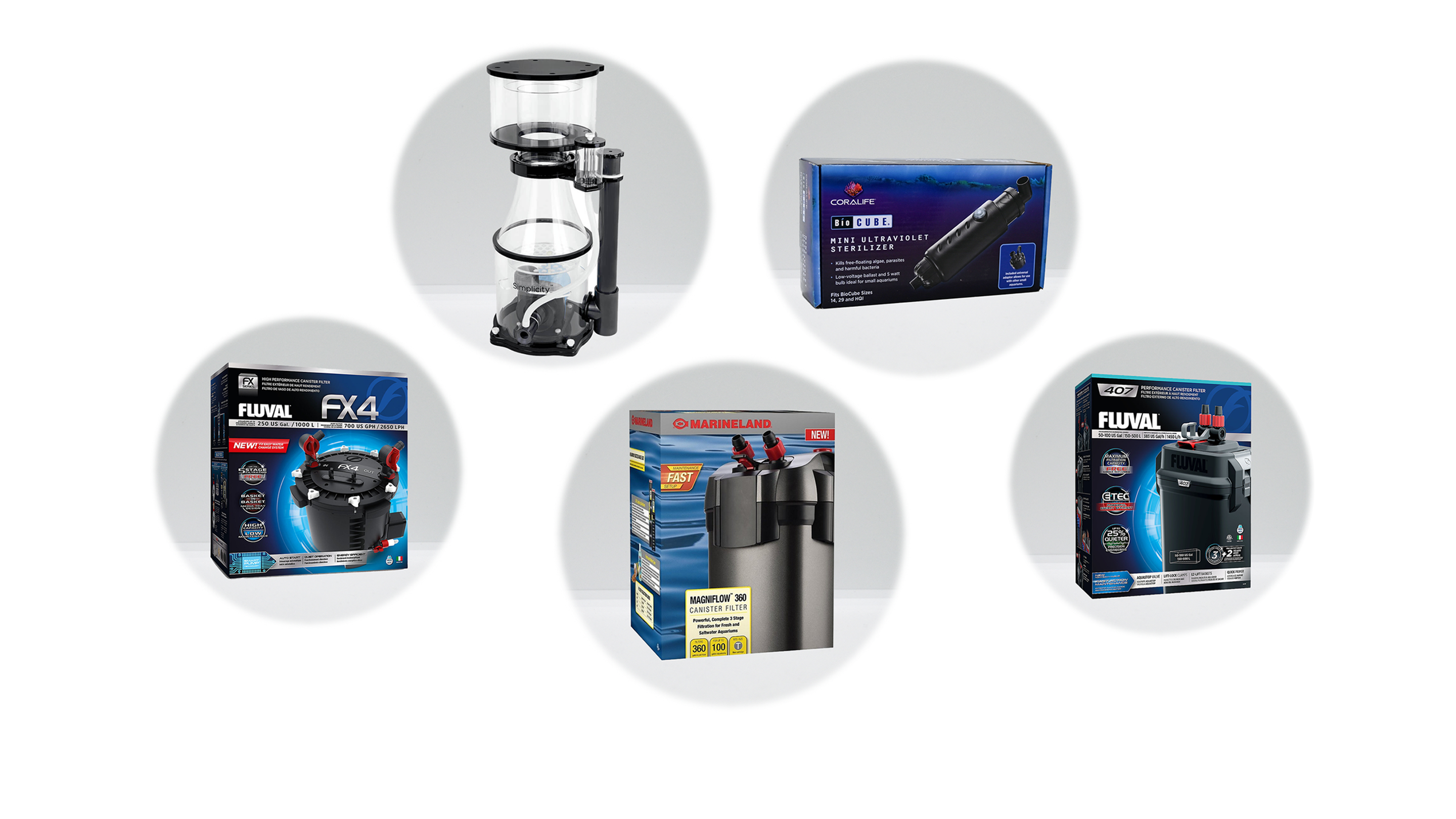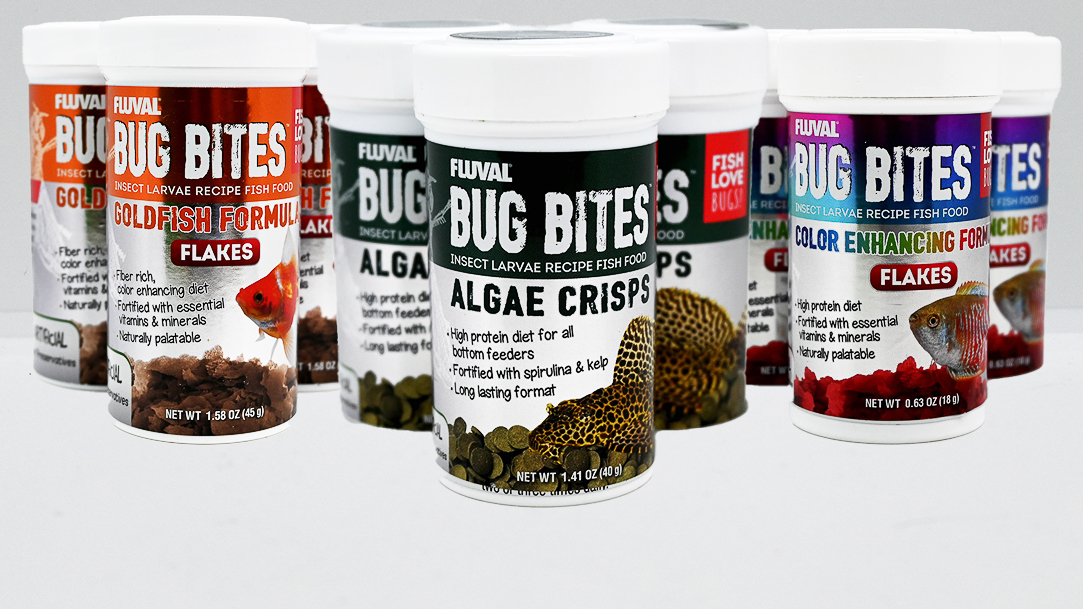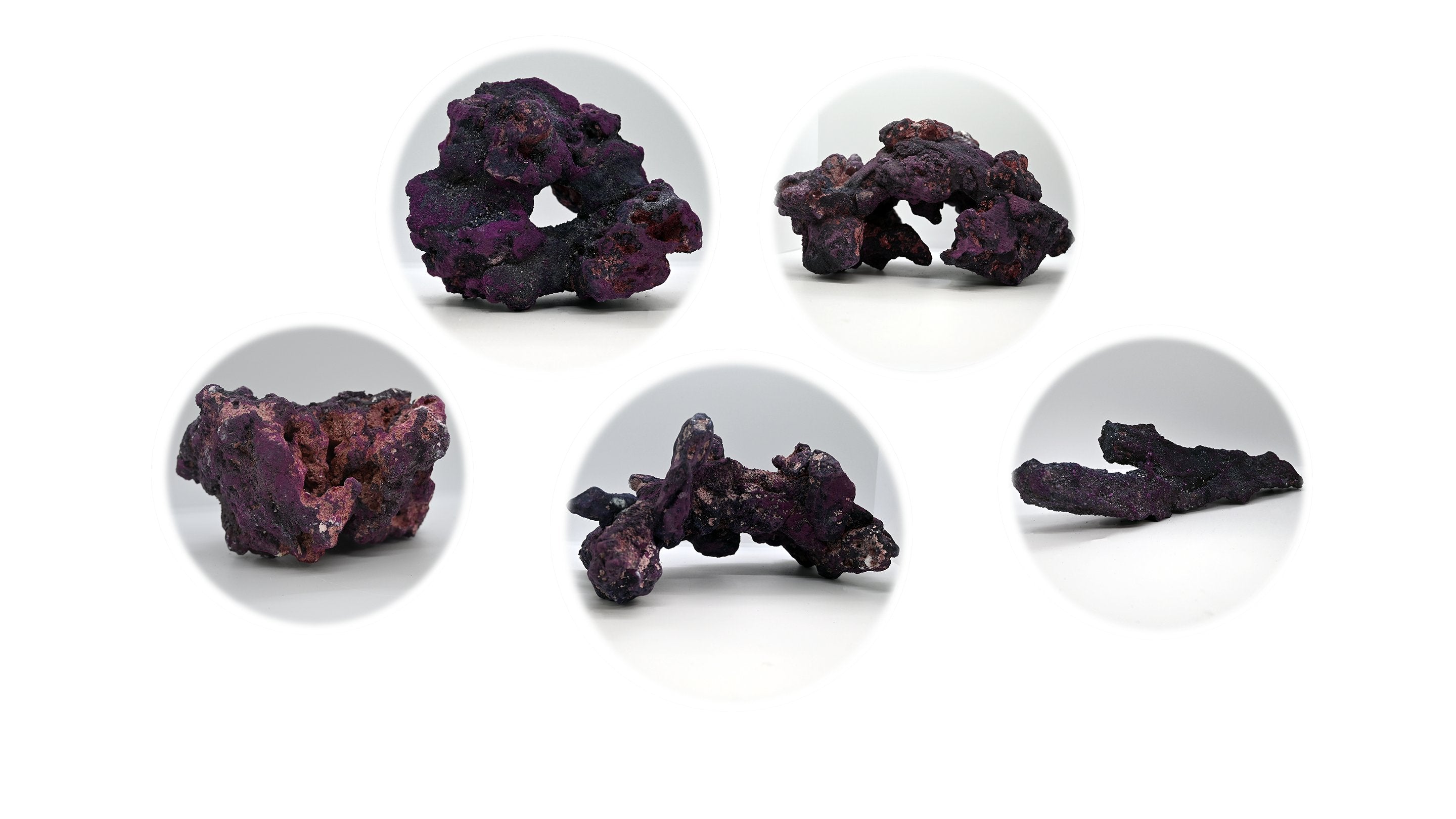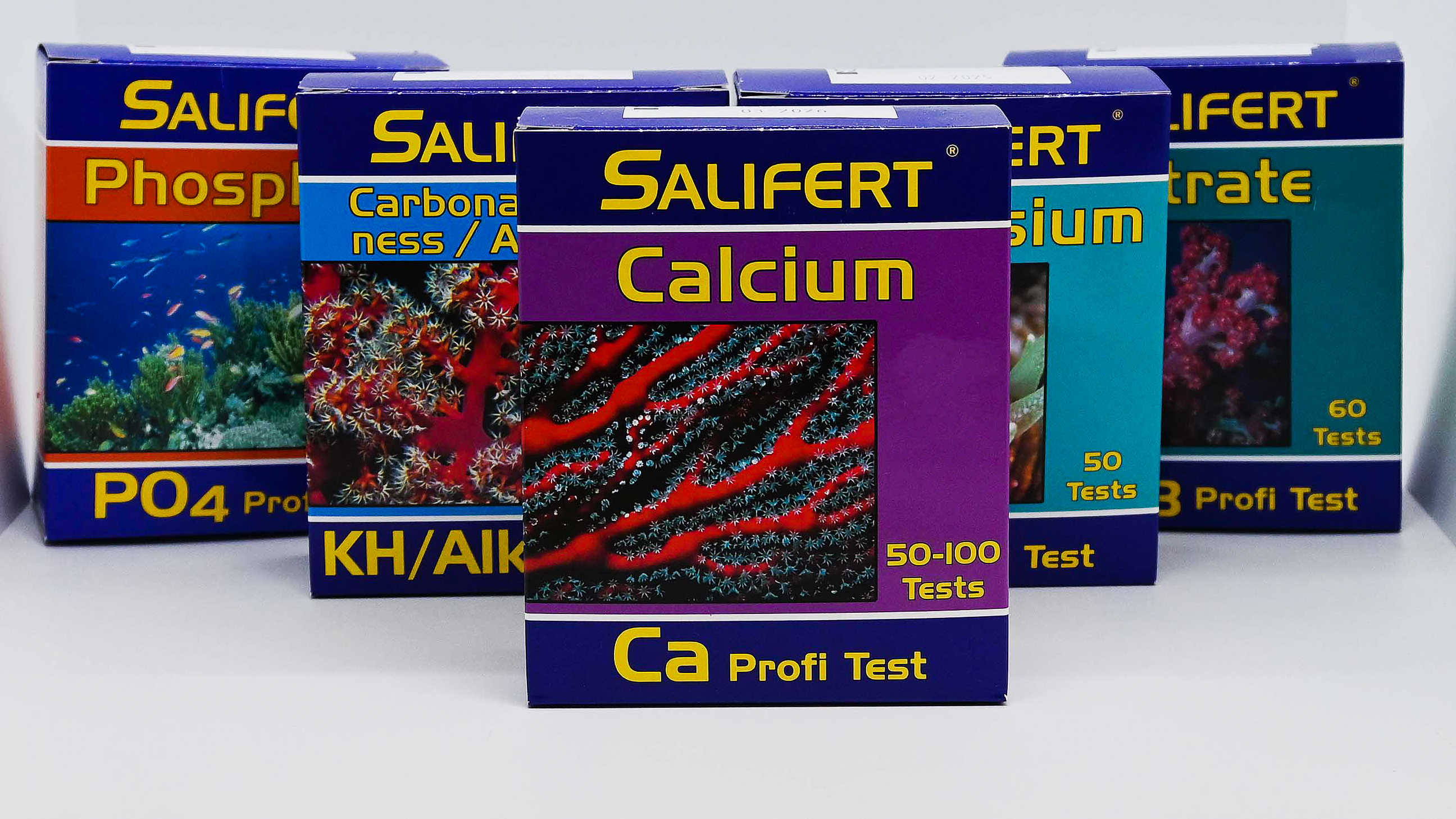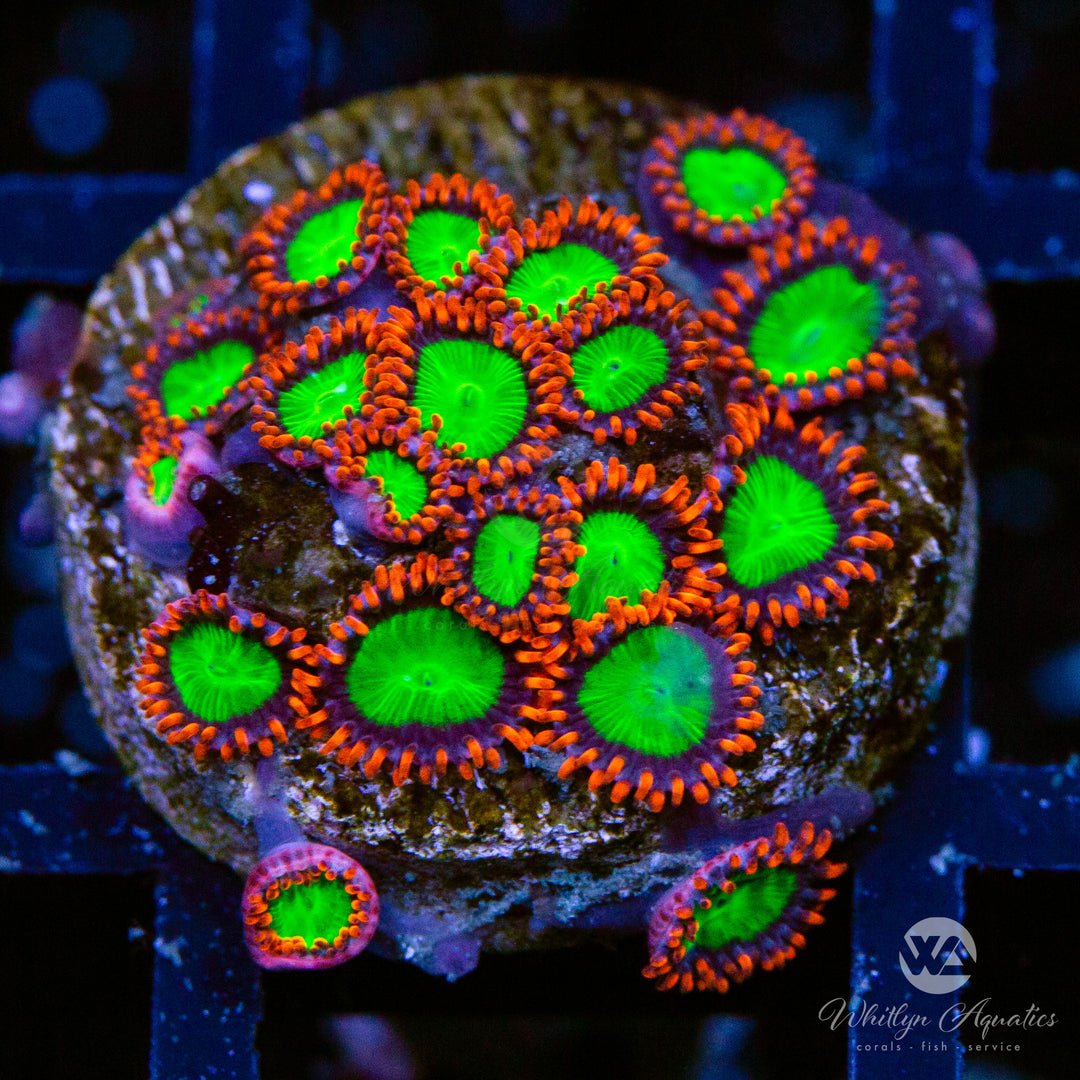
Electric Oompa Loompa Zoanthid (Aquacultured)
- Low stock - 2 items left
- Backordered, shipping soon
The Electric Oompa Loompa Zoanthid is a lively mix of green, purple, and orange that looks straight out of Willy Wonka’s reef. With a glowing green center surrounded by a deep purple ring and tentacles tipped in bright orange, this zoa packs serious color contrast in every polyp—eye candy for any zoa collector.
Zoanthids and Palythoas (Zoantharia species), commonly known as Zoas & Palys, are popular soft corals prized for their bright colors, patterns, and ability to carpet rockwork. They are hardy, fast-growing, and adaptable, making them a favorite for beginners and advanced reef keepers alike. With proper care, they create vibrant “zoa gardens” that bring life and motion to any reef aquarium.
Scientific Name & Identification
Zoanthids and Palythoas belong to the order Zoantharia. They are colonial polyps that resemble miniature anemones with tentacle-ringed mouths. Zoanthids generally have smaller, tighter polyps, while Palythoas have larger, fleshier polyps and can grow in thicker mats.
⚠️ Important Note on Safety: Some species, especially Palythoa, contain palytoxin, one of the most dangerous naturally occurring toxins. Always wear gloves and eye protection when fragging or handling Zoas and Palys, and avoid exposure to open cuts or mucous membranes.
Natural Habitat
Zoanthids and Palythoas are found across tropical reef zones worldwide, often carpeting rubble, shallow reef flats, and lagoons. Their adaptability allows them to thrive in various flow and light conditions, which translates well into aquarium care.
Aquarium Care & Setup
Temperature: 74–80°F (23–27°C)
pH: 8.1–8.4
Salinity: 1.024–1.026
Flow: Moderate, enough to keep debris from settling on colonies
Lighting: Moderate (50–150 PAR). Higher light may intensify coloration, while lower light often deepens hues
Placement: Rockwork or frag racks where colonies can spread and form mats
Feeding Zoanthids & Palythoas
Primarily photosynthetic, Zoas & Palys gain energy from symbiotic zooxanthellae. They may also benefit from occasional feeding of small particle foods such as reef roids, phytoplankton, or other fine coral blends.
Growth and Behavior
These corals spread quickly by budding, forming colorful mats and colonies that can overtake rock surfaces. They are considered semi-aggressive due to their ability to crowd neighboring corals. Regular fragging and controlled placement help maintain balance in the tank.
Tankmates
Zoanthids & Palythoas coexist well with most reef-safe fish and invertebrates. Avoid aggressive corals that may outcompete them chemically or physically.
For more information, check out our Zoa & Paly Care Guide.
Are Zoas & Palys beginner-friendly?
Yes, they are among the easiest corals to grow and are popular starter corals.
Do Zoas & Palys need to be fed?
They are primarily photosynthetic but may benefit from occasional feeding of fine particulate coral foods. However, they don't typically have a very apparent feeding response.
What lighting do Zoas & Palys need?
Moderate lighting (50–150 PAR) is ideal. Too much light may cause bleaching, while too little may slow growth.
Where should I place Zoas & Palys in my tank?
On rockwork or frag racks, where colonies can spread and form mats.
Will Zoas & Palys sting other corals?
Yes, they are semi-aggressive and can overgrow neighbors if not spaced properly.
How fast do Zoas & Palys grow?
Growth can be rapid under stable conditions, often forming carpets across rock surfaces.
Are Zoas & Palys safe to handle?
Caution is required. Some Palythoa species contain palytoxin, a highly dangerous compound. Always wear gloves, eye protection, and handle with care, especially when fragging.


